Abstract
A hyperpigment-producing mutant, R-10847, was derived from Monascus kaoliang F-2 (ATCC 26264) through a series of mutagenesis steps. The mutant produced a large quantity of Monascus pigment when grown in mantou (steamed bread) by solid culture. The mutant produced pigments extracellularly by extruding the pigments outside the cell in a lump together with some viscous substances. The productivity of pigment was about 100-fold greater than that of the wild type. The mutant lost the capability of spore formation, the growth rate decreased, and both the size and quantity of conidia were reduced. The color of the pigment produced by the mutant changed from orange to deep red.
Full text
PDF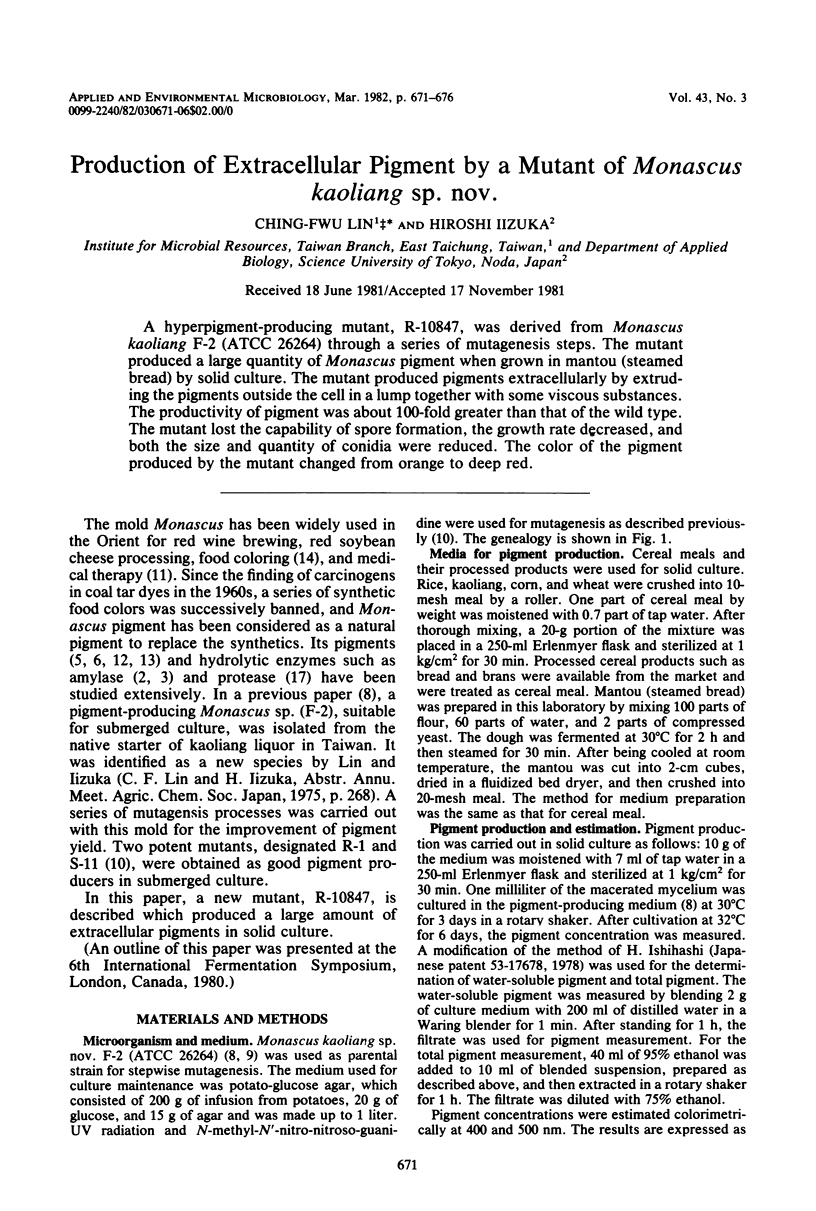
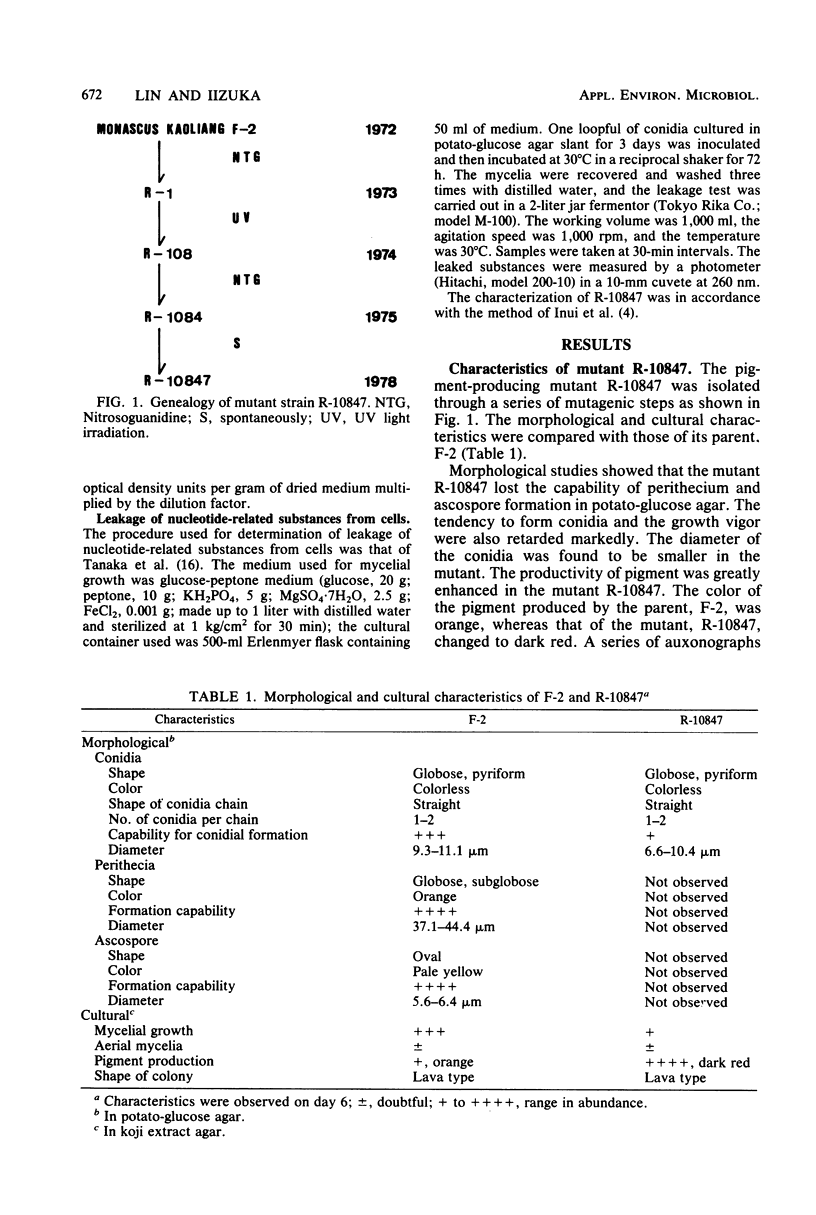
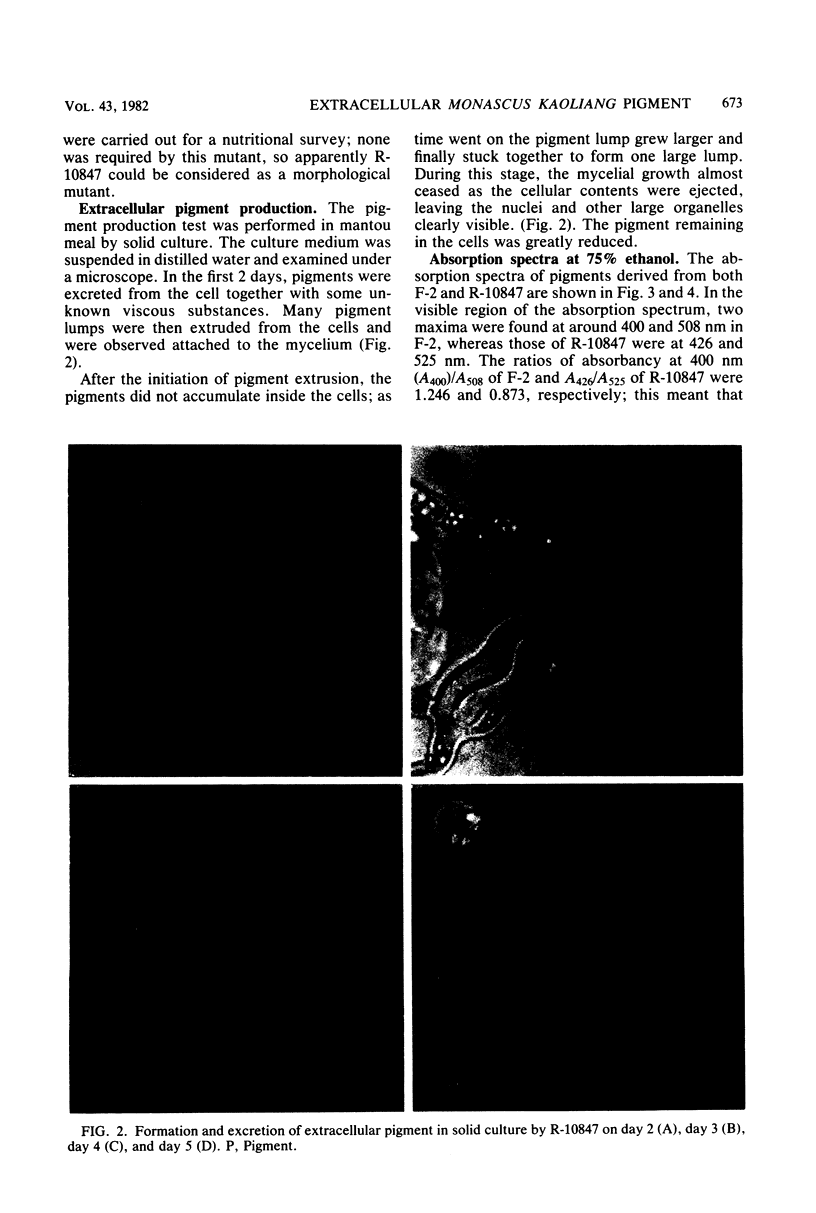
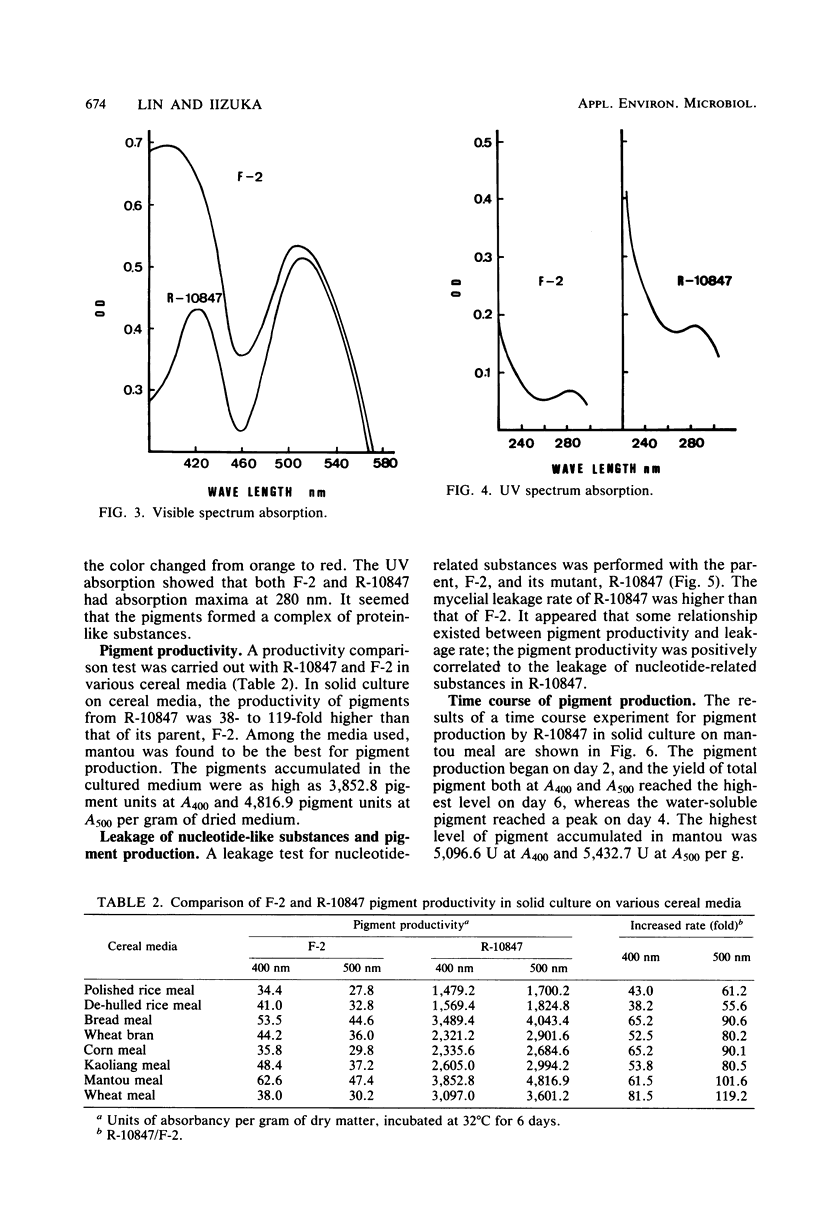
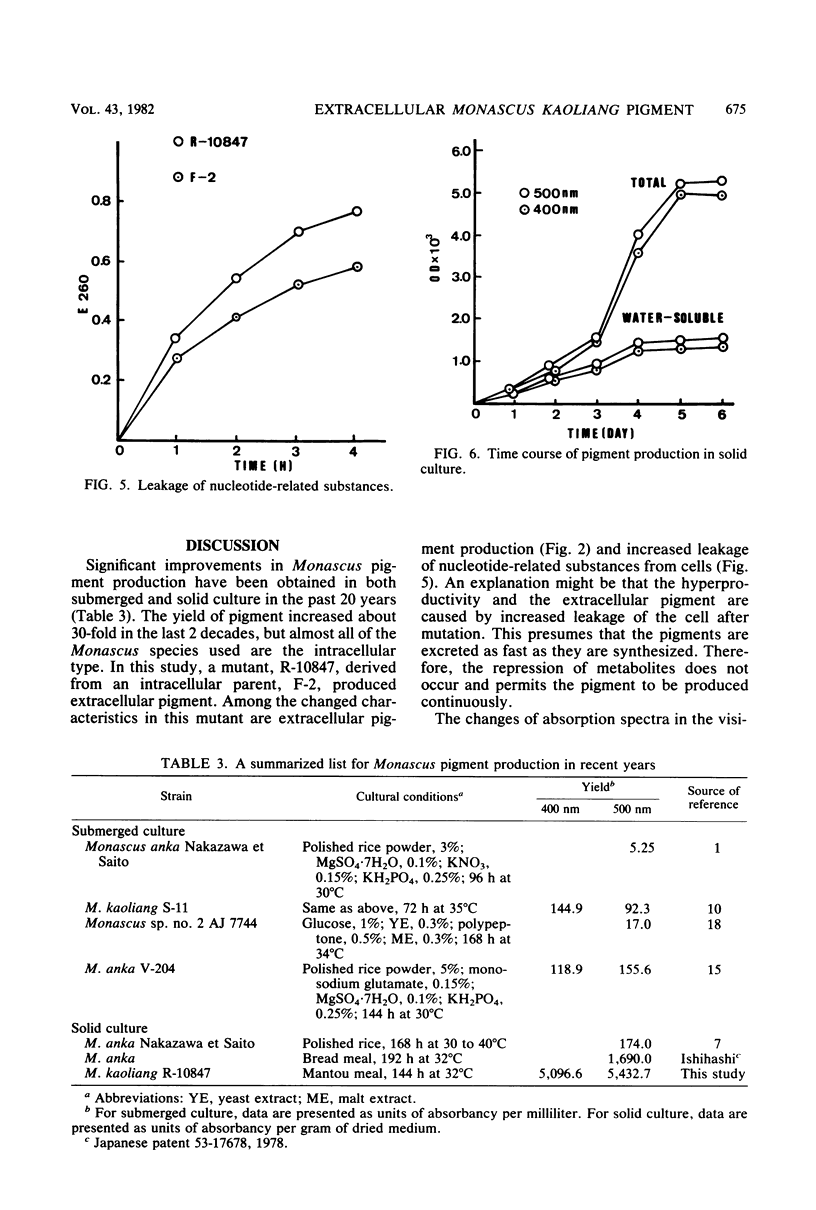
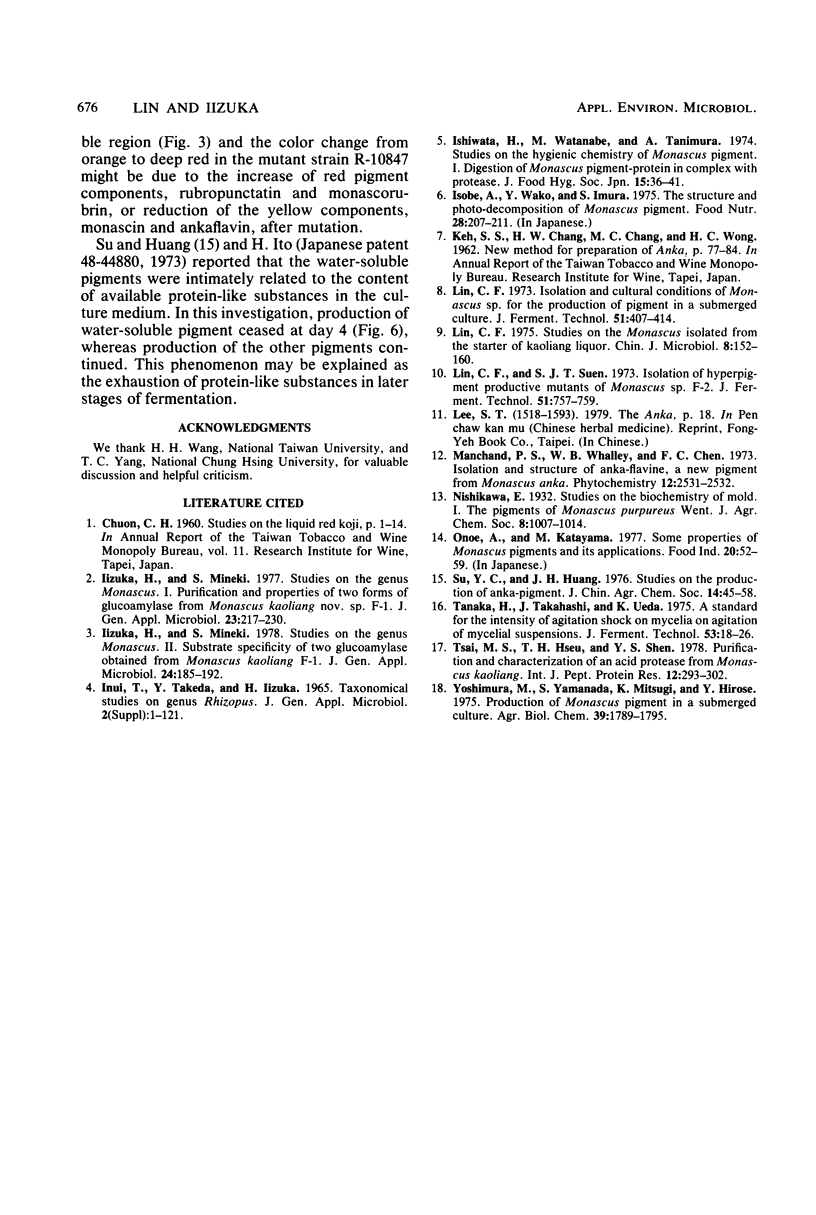
Images in this article
Selected References
These references are in PubMed. This may not be the complete list of references from this article.
- Lin C. F. Studies on the Monascus isolated from the startor of Kaoliang Brandy. Zhonghua Min Guo Wei Sheng Wu Xue Za Zhi. 1975 Jun;8(2):152–160. [PubMed] [Google Scholar]
- Tsai M. S., Hseu T. H., Shen Y. S. Purification and characterization of an acid protease from Monascus kaoliang. Int J Pept Protein Res. 1978 Nov;12(5):293–302. doi: 10.1111/j.1399-3011.1978.tb02900.x. [DOI] [PubMed] [Google Scholar]



